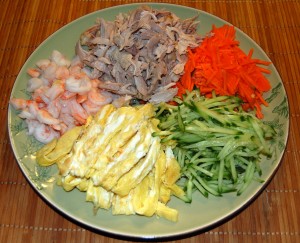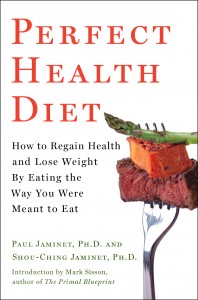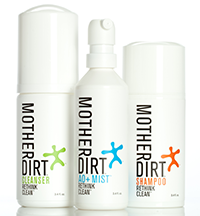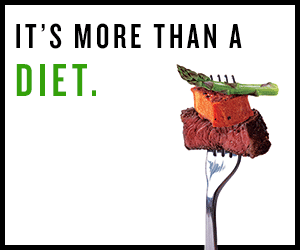Dr. Shilpi Bhadra Mehta is a Doctor of Optometry, a Board Member of the Archaeological Institute of America, and leader of the Boston Paleo group, Living Paleo in Boston. I asked her to tell us about Indian cuisine, and she offered a discussion of Bengali Fish Curry. We’ll do it in two parts: first, a discussion of its health benefits; second, a recipe with pictures. — Paul
My husband, Amit, grew up in a vegetarian family and never cared much for fish. But when he went Paleo for health reasons he fell in love with this traditional Bengali recipe, so I make it almost weekly! Bengal is part of India and Bangladesh, it is the home of Bengal tigers, but it is most famous for eating and cooking fish.
When Amit and I first tried Paleo we had some minor setbacks, but our experience improved wonderfully on the Perfect Health Diet version of Paleo so we are grateful for the Jaminets’ wonderful book and website. Amit and I are organizers of the Boston Paleo Meetup Group, and hosted a great potluck and lecture by the Jaminets in October 2011. It’s a pleasure to give back by providing a Perfect Health Diet recipe for you!
Health Benefits of Fish Oil, Ginger, and Turmeric
I’m a practicing optometrist and recommend that all my patients regardless of age or health (except those on blood thinners or a week before surgery) eat about a pound of oily fish per week (about 4-5 servings) like wild salmon, sardines, and sablefish (black cod). For those resistant to eating fish, I recommend fish oils (about 1-3 grams total/day depending on age and health). Fish is great for the whole body – especially the heart, brain, and eye!
There are many health benefits to the omega-3 fatty acids in oily fish. They:
- Exercise anti-inflammatory effects throughout the body.
- Help with brain and mental issues such as ADHD, autism spectrum disorders, anxiety, depression (including prenatal and postpartum), mood, cognition, Huntington’s disease, bipolar, schizophrenia, etc.
- Help prevent and reduce age related macular degeneration (AMD/ARMD – a blinding eye disease) even in those with a strong genetic history.
- Improve cardiovascular health in aspects such as blood pressure, circulation, triglycerides, VLDL, heart attacks, and stroke.
- May improve immune function, rheumatoid arthritis, and insulin sensitivity.
The long-chain omega 3s EPA (Eicosapentaenoic acid) and DHA (Docasahexaenoic acid) are especially important. DHA is the most common Omega 3 in the brain and the retina – the neural part of the eye that senses light, and part of the central nervous system (CNS)! About 60% of the polyunsaturated fatty acids (PUFA) in the retina are from DHA, and 40% of the brain’s PUFA is DHA. Low levels of DHA are associated with senility, depression, and suicide risk.
DHA is also important for sperm and erythrocytes (red blood cells). In the often blinding eye disease Retinitis Pigmentosa (RP), RP patients compared to normals had far lower DHA in blood and sperm. The RP patients had fewer and lower quality sperm. Since DHA is found in many tissues, the abnormalities in one tissue may share a similar biochemical cause as in other tissues.
The best and most easily absorbed source of omega-3 fatty acids is wild fish. EPA and DHA are most abundant in oily fish and in the breast milk of women who consume fish. Algae, pastured/grass-fed animals, and pastured dairy and eggs from grass-fed animals are other possible sources.
The body can convert some ALA (alpha linolenic acid) found in plants such as flax and chia into EPA and DHA, but this conversion is often poor – as low as 0.05-15% in healthy humans and worse in older people and those with some medical conditions! ALA has not shown the cardiovascular improvements of fish oil.
Although I typically recommend 1-3 grams of fish oil/per person a day for dry eye and other health issues, I cannot recommend the amounts of flaxseed that would be needed to deliver equivalent amounts of omega-3s. In flaxseed this would require 6-60 grams/per person a day which might cause diarrhea, intestinal blockage, nausea, constipation and other GI side effects.
I cannot recommend flaxseed also for women due to estrogenic effects that could negatively affect hormonal conditions like PCOS, endometriosis, fibroids, or any reproductive cancers. I believe flaxseed should be avoided in women of childbearing age – especially pregnant and breastfeeding women – since in animal studies and some human epidemiological studies it has been associated with preterm birth. In rodent studies flaxseed affected menstrual cycle, lowered birth weight, and altered reproduction in offspring including infertility.
In addition to oily fish, Bengali Fish Curry provides healthy plant foods such as onion, ginger, turmeric, and lemon/lime.
Ginger may help improve mood since it affects serotonin receptors. It helps with nausea from morning sickness, chemotherapy, and seasickness. Ginger also may have some antimicrobial properties. In animal studies it prevents skin cancer, kills ovarian cancer cells, and reduces diabetic complications such as cataracts.
Turmeric has anti-oxidant, anti-inflammatory, antimicrobial, and antitumor properties. A component known as curcumin has been shown to help cancer, osteoarthritis, Alzheimer’s disease, pancreatitis, psoriasis, and some infections.
There are so many benefits to Bengali Fish Curry, and probably more will be discovered in time – that is why I recommend it!
Selected References
Wikipedia also has a good introduction to each.
Ginger
Ernst and Pittler. Efficacy of Ginger for Nausea and Vomiting: A Systemic Review of Randomized Clinical Trials. British Journal of Anaethesia. 2000. 84 (3) 367-371. http://bja.oxfordjournals.org/content/84/3/367.full.pdf+html
Kato et al. Inhibitory Effects of Zingiber officinale Roscoe Derived Components on Aldose Reductase Activity in Vitro and in Vivo. Journal of Agricultural and Food Chemistry. 2006. 54 (18), 6640-6644. http://pubs.acs.org/doi/pdfplus/10.1021/jf061599a
Turmeric/Curcumin
Frautschy et. al. A Potential Role of the Curry Spice Curcumin in Alzheimer’s Disease.” Current Alzheimer Research. 2005. Apr; 2(2): 131-6. http://www.ncbi.nlm.nih.gov/pmc/articles/PMC1702408/pdf/nihms3585.pdf
Rajasekaran, Sigrid. Therapeutic Potential of Curcumin in Gastrointestinal Diseases. World Journal Gastrointestinal Pathophysiology. 2011 February 15; 2(1): 1–14. http://www.ncbi.nlm.nih.gov/pmc/articles/PMC3097964/?tool=pubmed
Omega 3 Fatty Acids/DHA/EPA/Flaxseed
Amminger et al. Long-chain omega-3 fatty acids for indicated prevention of psychotic disorders: a randomized, placebo-controlled trial. Archives General Psychiatry. 2010 Feb;67(2):146-54. http://www.eiyh.org.uk/silo/files/fatty-acids-for-indicated-prevention.pdf
Tou et al. “Flaxseed and Its Lignan Precursor, Secoisolariciresinol Diglycoside, Affect Pregnancy Outcome and Reproductive Development in Rats.” Journal of Nutrition. 1998 Nov;128(11):1861-8. http://jn.nutrition.org/content/128/11/1861.long
Ho et al. Reducing the genetic risk of age-related macular degeneration with dietary antioxidants, zinc, and ?-3 fatty acids: the Rotterdam study. Archives Ophthalmology. 2011 Jun;129(6):758-66. http://www.ncbi.nlm.nih.gov/pubmed/21670343
Barker et al. Nutritional manipulation of primate retinas, V: effects of lutein, zeaxanthin, and n-3 fatty acids on retinal sensitivity to blue-light-induced damage. Investigative Opthalmology & Visual Science. 2011 Jun 6;52(7):3934-42. Print 2011 Jun. http://www.ncbi.nlm.nih.gov/pmc/articles/PMC3175953/pdf/z7g3934.pdf
Wong et al. Prevention of age-related macular degeneration. International Ophthalmology. 2011 Feb;31(1):73-82. Epub 2010 Sep 23. http://www.ncbi.nlm.nih.gov/pmc/articles/PMC3021198/pdf/10792_2010_Article_9397.pdf
Wang et al. n-3 Fatty acids from fish or fish-oil supplements, but not alpha-linolenic acid, benefit cardiovascular disease outcomes in primary- and secondary-prevention studies: a systematic review. American Journal of Clinical Nutrition. 2006 Jul;84(1):5-17.
Brenna et al. alpha-Linolenic acid supplementation and conversion to n-3 long-chain polyunsaturated fatty acids in humans. Prostaglandins Leukotrienes Essential Fatty Acids. 2009 Feb-Mar;80(2-3):85-91. http://www.ncbi.nlm.nih.gov/pubmed/19269799
Connor et al. Sperm Abnormalities in Retinitis Pigmentosa. Investigative Ophthalmology & Visual Science. November 1997 vol. 38 no. 122619-2628. http://www.iovs.org/content/38/12/2619.long

















Recent Comments